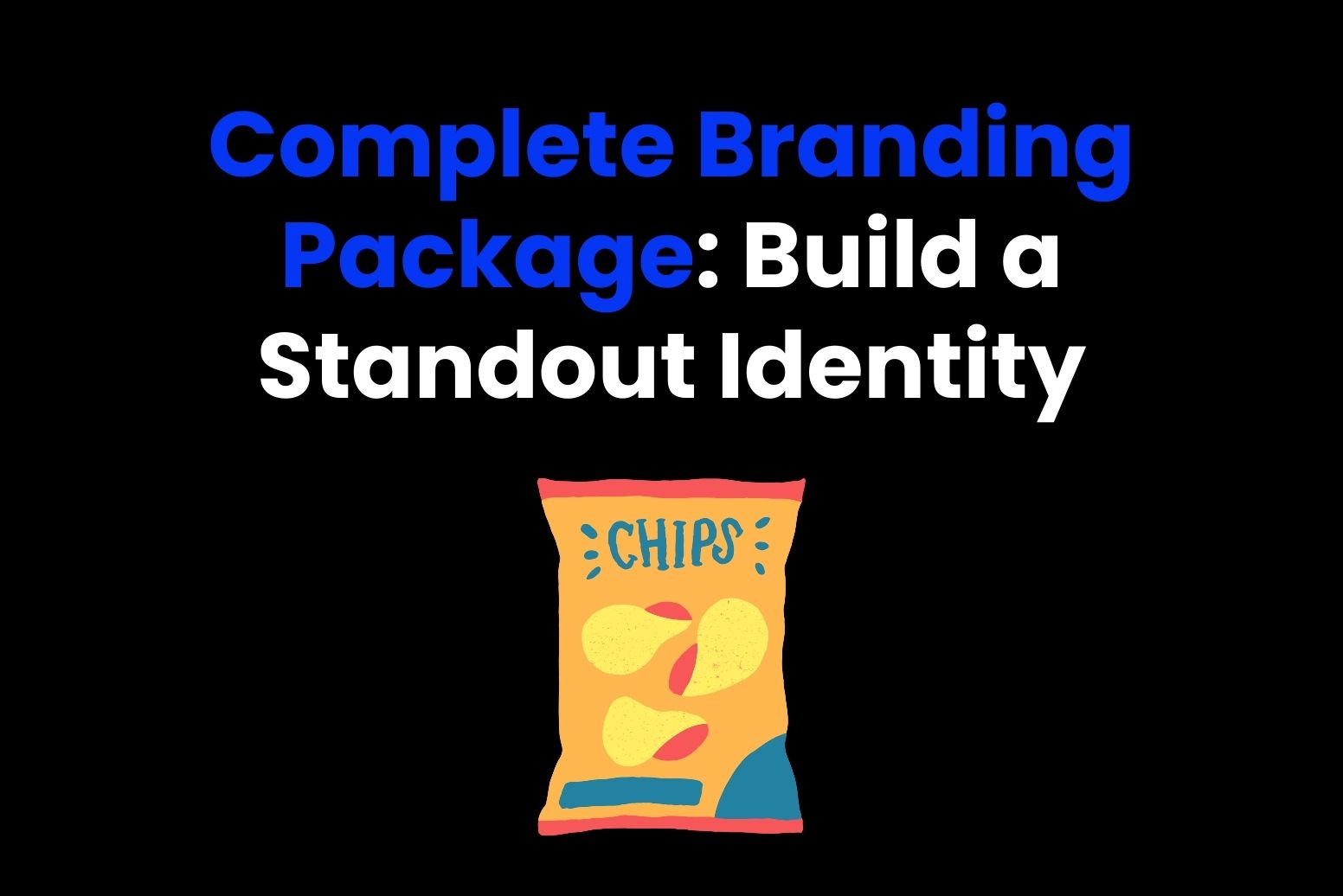In modern branding and highly competitive AI marketplace, a memorable and consistent brand identity is the key to any business’s success. A branding package is the accumulation of all the tools and elements that define a company’s personality, from its visual aesthetics to the tone of its messaging. This guide explores the core components of a branding package and how to create a cohesive identity that resonates with your audience and leaves a lasting impression.
Part 1: What Is a Branding Package?
Branding package is a set of elements and rules that describe the image of a company or product and serve as its promotion tool. It is a fundamental progression of the overall approach of how a brand interacts with an audience across multiple platforms to make it recognizable and, thus, familiar. Typically, such packages include items such as the logo, typography, colour and template at the design level, and strategic branding messages and tone of voice at the communication level. Together with other elements, these form the basis of the lasting, professional, and cohesive brand image that creates trust, brand recognition, and customer goodwill.
Part 2: Essential Elements of a Branding Package
Logo Design
Any branding concept has one compelling visual component – the logo, which serves as the foundation of any branding strategies package. Logo is the first interface of the brand and in most of the cases, the only gateway to the business for an intending client. Its design is very important because the symbol reflects the personality and the values for which the brand stands for. It encompasses the basic three qualities of a logo; simplicity: this makes a logo easily memorable, flexibility: it should suit any surface design whether digital or printed. Designing a most suitable logo is both an art and science in a way.
Typography and Fonts
Typography plays a pivotal role in shaping a brand’s perception. Fonts are not just functional; they send emotions and set the tone of the brand’s voice. Serif fonts, for instance, tend to give a traditional and refined feel, which makes them suitable for legal or luxury brands; sans-serif fonts, instead, give a modernist and minimalist feel, mainly used by tech companies, among others. The most important thing in choosing typographic elements is knowing the brand personality and target audience. For example, a health and wellness brand would opt for soft, rounded sans-serif fonts, conveying an approachable, caring quality.
Color Palette
Colors are probably the most effective tool within a branding package, one that can easily evoke feelings and influence perceptions. Each color is imbued with specific psychological connotations; red evokes passion and energy, and blue trust and reliability. By understanding these associations, businesses can choose a color palette that reflects their core values and will resonate with their audience. An effective color palette generally features a primary color, the color that dominates the brand’s visual identity, and a few complementary secondary colors to give options.
Brand Voice and Messaging
A strong brand voice is as important as its visual elements. It gives a tone and style to the brand’s communication so that every interaction with the audience will feel the same and authentic. To build an effective brand voice, it first requires understanding the target audience’s preferences, expectations, and aspirations. For example, a brand targeting the younger audience may have a friendly, conversational tone, while a B2B company may require a more formal and authoritative style. Brands like Innocent Drinks have perfected the playful and humorous note, making their messaging relatable and engaging.
Visual Assets and Graphics
Establishing consistency in the visual style is important for setting up a cohesive and recognizable brand identity. Uniformity of design elements, such as colors, typography, placement of logos, and imagery, would ensure a seamless experience with all customer touch points, and thus your audience can associate your content with your brand without any confusion, regardless of the platform. Inconsistent visuals dilute the brand message and confuse customers. Consistency in visual style enhances professionalism, increases trust, and builds recognition for the brand.
Templates for Marketing Materials
Types of Templates
Templates help streamline the design process and ensure consistency across different marketing materials. Some common types of templates include:
- Social Media Posts: Pre-designed layouts for Instagram, Facebook, LinkedIn, and Twitter.
- Business Cards: Ready-to-use designs that can be customized with your logo, contact information, and branding colors.
- Brochures and Flyers: Templates for event, product, or service promotions.
- Email Newsletters: Customizable formats for professional email campaigns.
- Presentation Decks: Branded slide designs for pitches, meetings, or webinars.
How Templates Enhance Efficiency and Professionalism
Templates save time and also efforts as they provide a well-structured design framework. It will ensure branding consistency; thus, marketers can concentrate more on content rather than the layout. Moreover, it has a professional look even if users are not highly skilled in designing. It is also particularly useful for small businesses with no dedicated design teams as it ensures that all marketing materials have the same look as the brand’s visual identity.
Part 3: Benefits of Having a Comprehensive Branding Package
Increased Brand Recognition and Trust
A solid branding package ensures that all parts of your brand—be it your logo, color scheme, typography, or messages—go together as one. These results in recognition, making your customers easily identify your brand in different channels. Being clean and professional also goes to creating trust since your customers would consider your business credible.
Enhanced Customer Loyalty and Engagement
When customers experience a consistent brand experience, they are likely to connect with your brand. A strong branding package evokes an emotional response that breeds loyalty and repeat business. In addition, compelling and on-brand visuals grab attention and increase interaction rates through social media and marketing efforts.
Streamlined Marketing Efforts
By defining the visual assets, templates, and guidelines in place, marketing efforts become far more efficient. Teams can rapidly create content without sacrificing quality and consistency. This saves more time and ensures that the brand is represented in all its communications and aesthetic, which are fundamental to more effective campaigns and market presence.
Part 4: How to Create a Branding Package
Creating a branding package is a structured approach to defining and unifying the identity of a brand across platforms. It requires careful planning, creative design, and collaboration to ensure consistency in and resonance with the targeted audience.
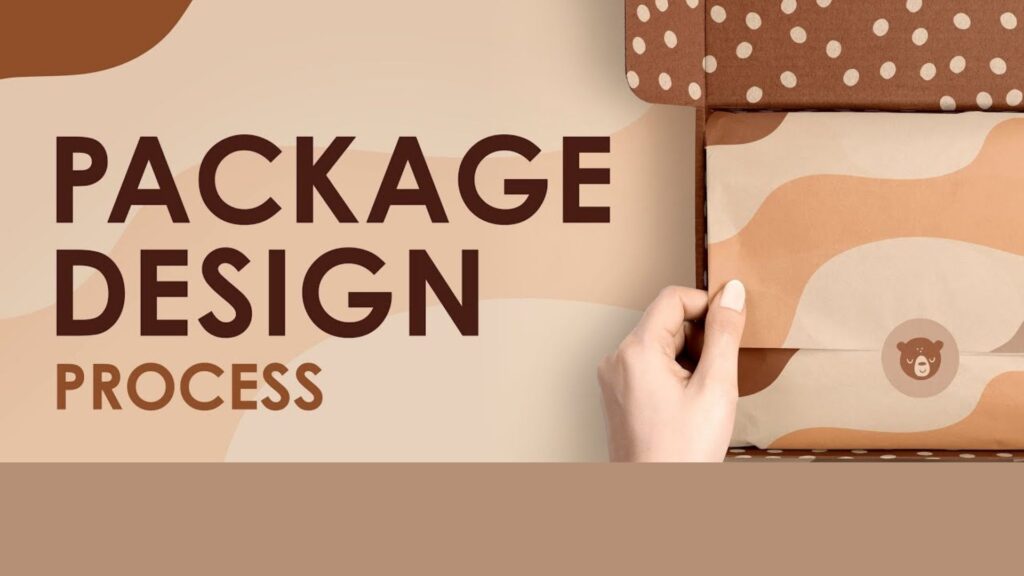
Step 1: Define Your Brand Identity
The process commences with defining your brand identity. This step entails understanding the core of your business—your mission, vision, values, and unique selling proposition. One should identify the preferences and expectations of the target audience at this stage. Knowing who your audience is will help you design a brand identity that appeals directly to them.
Step 2: Develop Your Brand Voice and Messaging
Once you have your brand identity, you need to develop your brand voice and messaging. Your brand’s voice should reflect its personality: friendly, professional, humorous, or serious. Your messaging, including taglines and slogans, should convey the values and emotions your brand wants to communicate. Make sure that this voice is consistent in all your materials.
Step 3: Create Your Visual Identity
Now that the identity and voice are established, you can start to build the visual identity. This is about creating a logo, color palette, typography, and all other elements that will communicate visually. Brainstorm ideas for your logo. Pay attention to the colors and fonts that you use because these must convey the emotions and values that you want to communicate.
Step 4: Build Brand Guidelines
Once your designs are ready, compile all these elements into a comprehensive brand guideline document. This document serves as a reference for anyone involved in producing branded materials, ensuring your brand stays consistent across all touchpoints, from business cards to digital ads. Brand guidelines typically include rules for logo usage, color schemes, fonts, and tone of voice.
Step 5: Review and Refine
The critical final process of branding development is garnering stakeholders’ feedback or even a test audience after having created your branding elements, ensuring areas for improvement will be known and that all these elements resonate with the right audience. Iterate on all those designs and messaging until every detail seems to fit right within the brand’s identity.
Step 6: Packaging and Distribution
Once your branding is finalized, organize all your assets, such as logos, fonts, color palettes, and brand messaging, into a comprehensive branding package. Distribute this package to your team and any external partners involved in implementing your brand.
Part 5: Create Professional Logos with Arvin AI
A logo is the visual cornerstone of your brand identity, making it essential to have a logo that reflects your brand’s personality and values. The Arvin Logo Maker is the AI-powered platform for rapid and efficient creation of professional and custom logos for businesses. You can be a small startup or a well-established one, but this tool makes the logo design process easier by providing different design concepts that suit your brand. Arvin AI is easy to customize; hence, your logo will match your overall branding package.
Key Features of Arvin AI:
- AI-Generated Logo Ideas: Enter your brand information to get customized logo ideas. Industry-Specific Templates: Choose templates specific to your industry for instant design ideas.
- Customization Options: Customize colors, fonts, and layout to fit your brand’s personality.
- High-Resolution Downloads: Download logos in various formats (PNG, SVG, PDF) for print and digital use.
- Real-Time Mockups: See how your logo will look on various mockups, such as business cards and website banners.
Steps to Use Arvin AI
Step 1: Go to the Arvin AI Website
Open your browser and go to logo.arvin.chat to begin designing your custom company logo, including the option for a transparent logo.
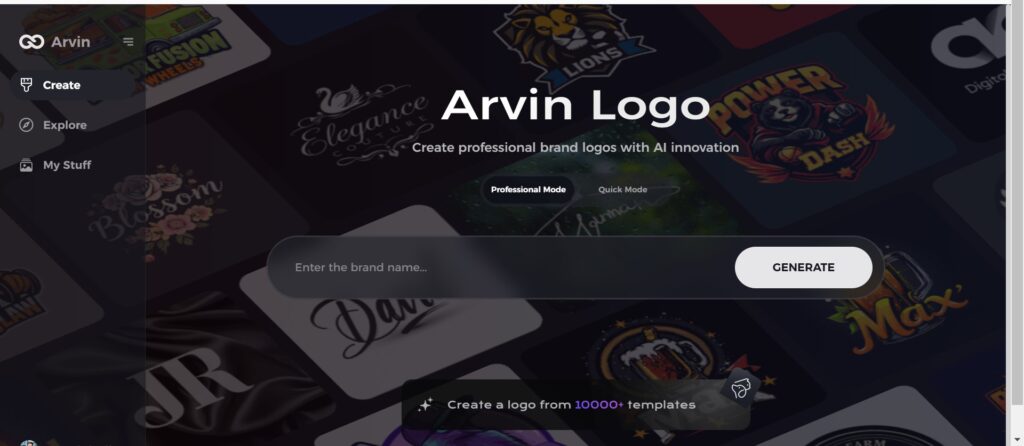
Step 2: Input Your Company Information
Enter your company name, select its category, and ask for a transparent logo. This information will allow the AI to create logo designs that fit your business’s needs and identity.
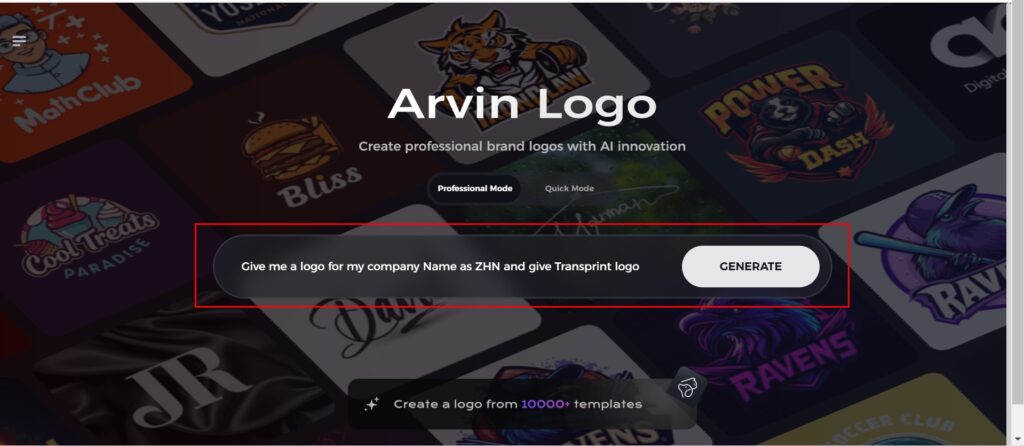
Step 3: Select Your Industry
Choose the most relevant industry to your business. This will make sure that AI designs a logo that is closely related to the values of your brand and market niche.
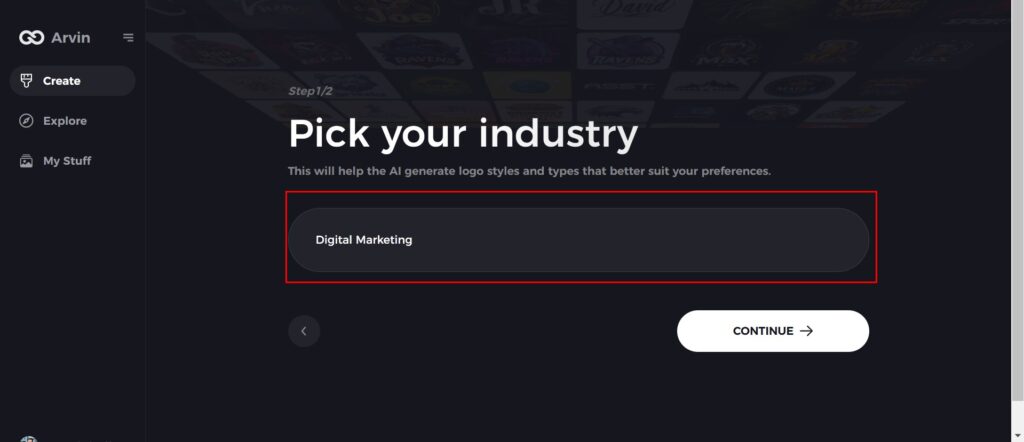
Step 4: Select Design Style
Choose a design style available, or keep it as “no style” to let the AI amaze you with unique ideas. The chosen style will guide the AI while creating your logo design.
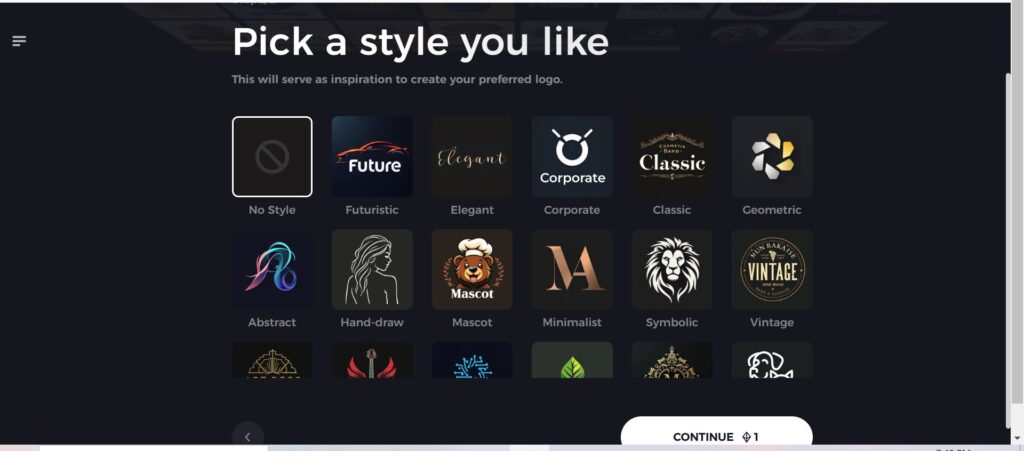
Step 5: Browse Logo Concepts
Arvin AI will design multiple logos according to your requirements. You can go through the designs and pick the one that represents your brand’s identity most aptly.
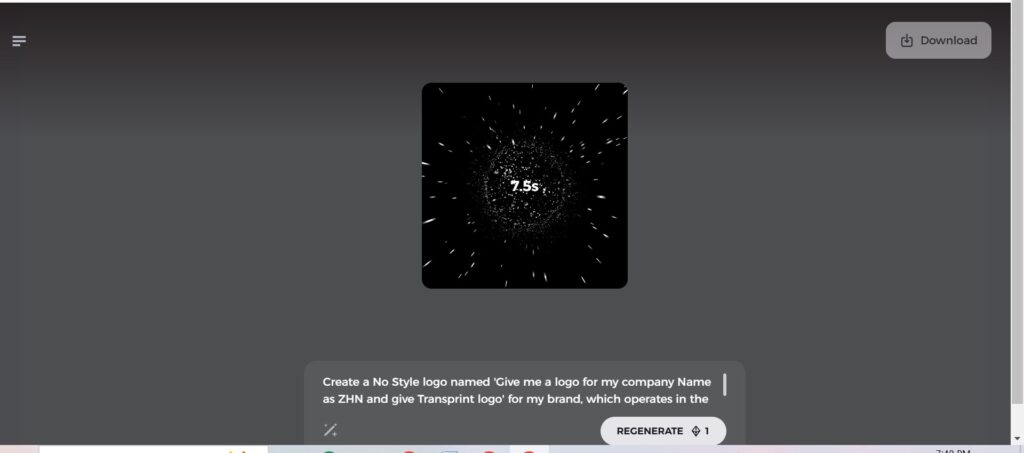
Step 6: Finalize the Logo
Customize the final logo by changing colors, fonts, and icons to suit your brand personality and aesthetic to make it a true reflection of your business.
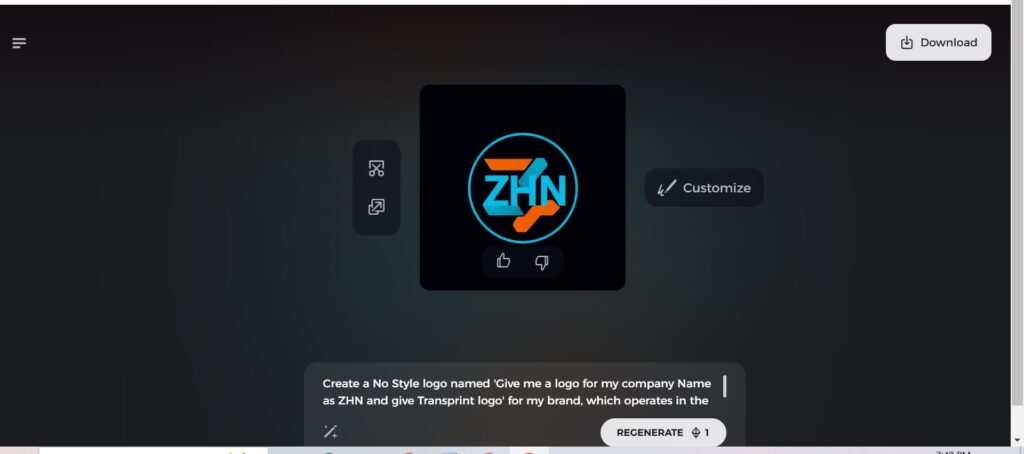
Step 7: Download Your Logo
Once you are satisfied with your logo, you will be able to download it in multiple formats such as PNG or SVG, allowing you to use it everywhere-from websites to social media to print materials and more.
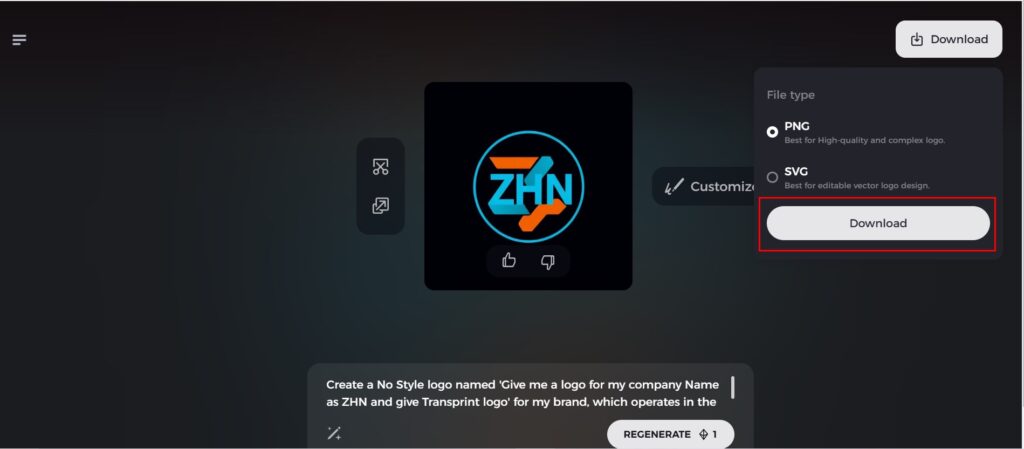
Part 6: Real-Life Examples of Branding Packages in Action
Strong branding packages are essential to the success of any business. Real-life examples of a well-executed branding package can be insightful into what works and what doesn’t.
Case Studies of Successful Businesses with Strong Branding Packages
Coca-Cola:
Coca-Cola’s branding is an epitome of consistency and simplicity. The use of red and white as primary colors in the brand gives out feelings of happiness and energy, while the classic cursive logo is timeless. The branding of Coca-Cola is not just limited to the logo but extends to its message of togetherness and joy, like its famous “Open Happiness” campaign. This has made Coca-Cola a global icon by being consistent in all its touch points.

Airbnb:
Airbnb’s brand is on belonging and community. This abstract heart logo is sleek and the idea behind it. It feels warm and inviting when put together with a voice that is friendly and personable. The messaging by Airbnb is about experiences versus transactions, which appeals to someone looking for authentic travel experiences.
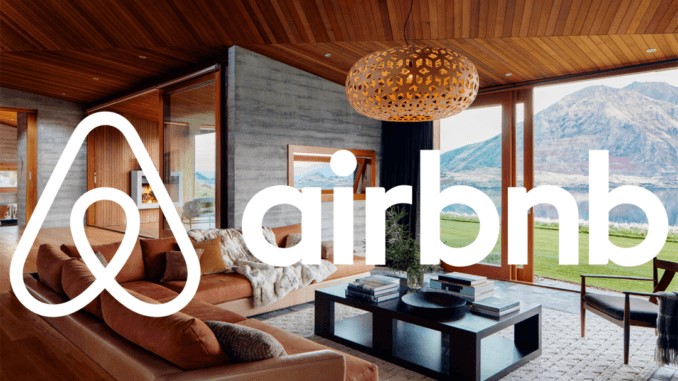
Nike:
Nike’s branding package is characterized by the minimalist Swoosh logo and empowering messages. The Swoosh represents movement and speed, and the company’s most famous slogan, “Just Do It,” tells people to just do it. Nike uses bold typography and dynamic visuals to reinforce the message of motivation and achievement.
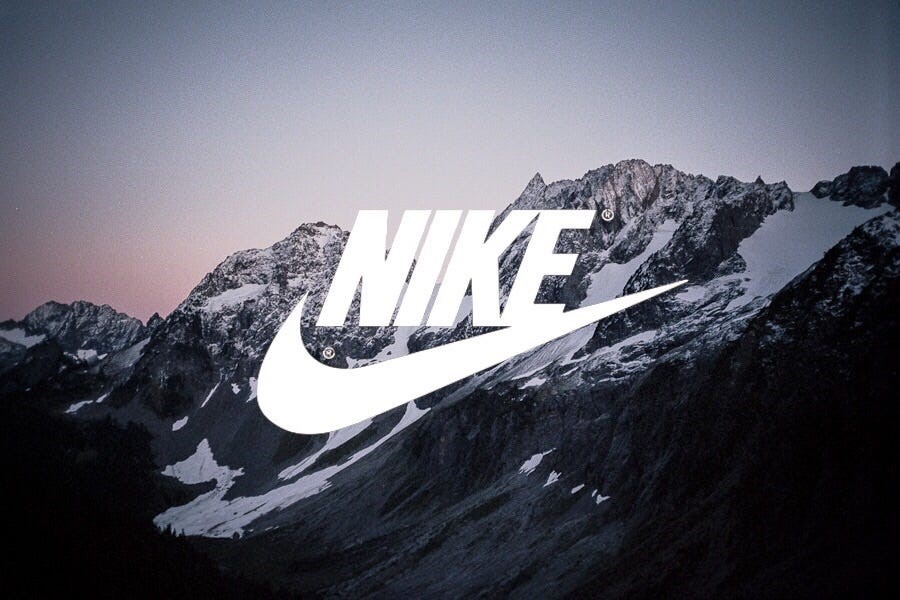
Part 7: Common Mistakes to Avoid When Creating a Branding Package
Overcomplicating the Design Process
The key to creating a branding package is simplicity. A common mistake people make is trying to include too many elements, which makes the design cluttered and inconsistent. It’s easy to overcomplicate the design process, confuse your audience, and dilute the core message of your brand. Focus on creating clear, concise, and easily recognizable visual elements. A minimalist approach often yields the best results, as it becomes easier for customers to engage with and remember your brand.
Ignoring Audience Feedback
It’s very tempting to create your branding package based on personal or industry trends, but ignoring such feedback from your audience leaves a lot of opportunities not considered. Your branding should align with your target audience’s needs and preferences. Gathering these feedbacks through surveys, focus groups, or user testing will help you tailor your branding to appeal directly to the customer base. If it’s not considered, then what results is a disconnected brand.
Failing to Maintain Consistency Across Platforms
Branding across various platforms such as your website, social media, and print materials often lacks consistency. This results in confusing your audience, thereby destroying the credibility of your brand. It is important that consistency across all channels build a robust, unified brand. Consistency in logo, colors, fonts, and messages should remain the same through all touch points so your brand can be easily recognizable and trusted.
Conclusion
A well-designed branding package is the success of every business. It is how your brand identity is set strong and consistent, making a strong impression on your audience. Arvin AI streamlines this design process, allowing access to businesses of all sizes to begin building their branding logos today. Arvin has User-friendly interface for fast logo creation without design experience.
FAQs About Branding Packages
1. What does a branding package comprise?
A branding package is an overall essential brand asset, such as a logo, color palette, fonts, templates, and guidelines for brand messaging, to create a cohesive and professional brand identity that can be consistently applied across different platforms and marketing materials.
2. How much does it cost to have a branding package?
The cost of creating a branding package varies widely. Even the DIY options with templates and design tools can be on the cheap side, though professional designers or agencies will command steeper prices. Prices frequently are tied to how hard the design is and the complexity of customization.
3. Do I have to be a designer to do a branding package?
Absolutely! Even without prior design experience, it is possible to develop a branding package. Tools such as Arvin AI facilitate the design process through available pre-made templates and features with AI-powered support, including logo generation, typeface selection, and even color palette creation.
4. Why is consistency so essential for a branding package?
Consistency in a branding package is vital for building trust with your audience. It ensures that the brand would be easily recognizable across different platforms and marketing materials, establishing a strong and unified identity.
Read More

